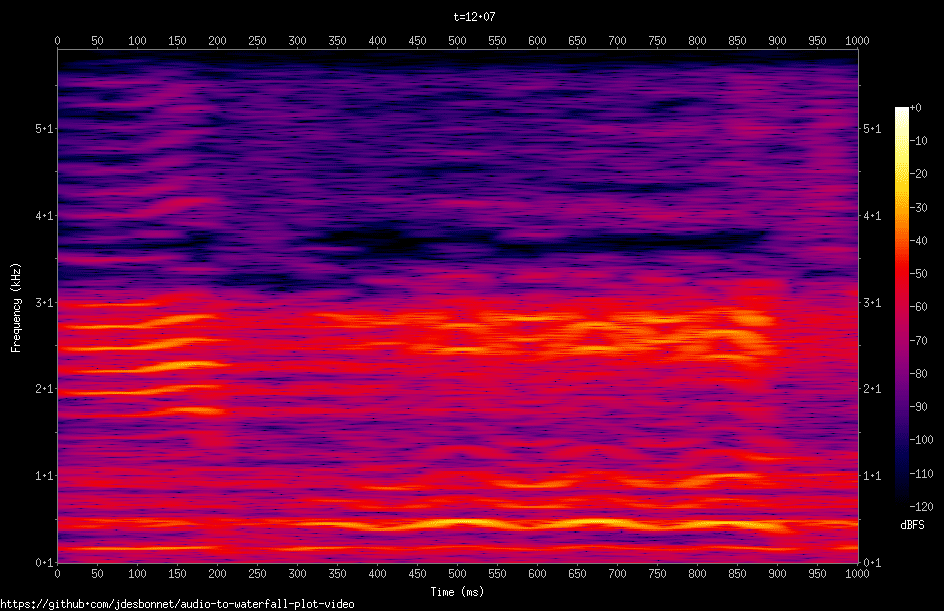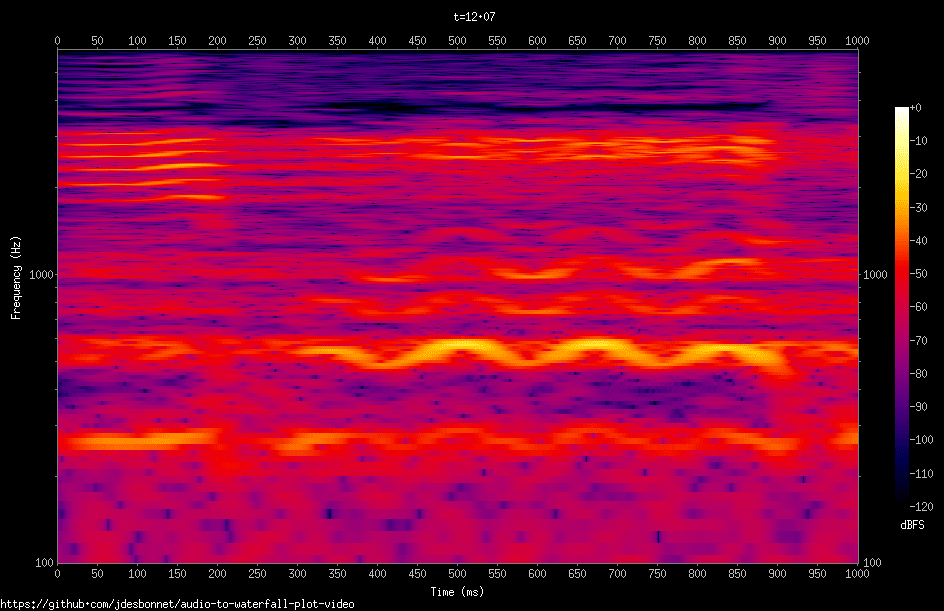ffmpeg -f v4l2 -r 9 -s 640x480 -i /dev/video0 thermal.avi
You can preview while shooting with the camera's LCD. But sometimes you want to see a preview on screen. That turns out to be tricky.
I found a useful solution on this thread [4]:
1. Create a fifo file:
mkfifo /tmp/livevideo.fifo
2. Run mplayer on the fifo:
mplayer -cache 512 -really-quiet /tmp/livevideo.fifo
Here is a sample video captured with ffmpeg:
Footnotes:
[1] also the Flir E6, E8, the Exx range and most (all?) recent models as far as I know
[2] http://en.wikipedia.org/wiki/International_Traffic_in_Arms_Regulations
[3] http://www.ffmpeg.org/
[4] http://nerdfever.com/?p=2661
I found a useful solution on this thread [4]:
1. Create a fifo file:
mkfifo /tmp/livevideo.fifo
2. Run mplayer on the fifo:
mplayer -cache 512 -really-quiet /tmp/livevideo.fifo
3. Run ffmpeg to capture to file and also relay to the fifo:
ffmpeg -f v4l2 -r 9 -s 640x480 -i /dev/video0 thermal.avi -map 0 -f avi -vcodec rawvideo -y /tmp/livevideo.fifo
Footnotes:
[1] also the Flir E6, E8, the Exx range and most (all?) recent models as far as I know
[2] http://en.wikipedia.org/wiki/International_Traffic_in_Arms_Regulations
[3] http://www.ffmpeg.org/
[4] http://nerdfever.com/?p=2661






